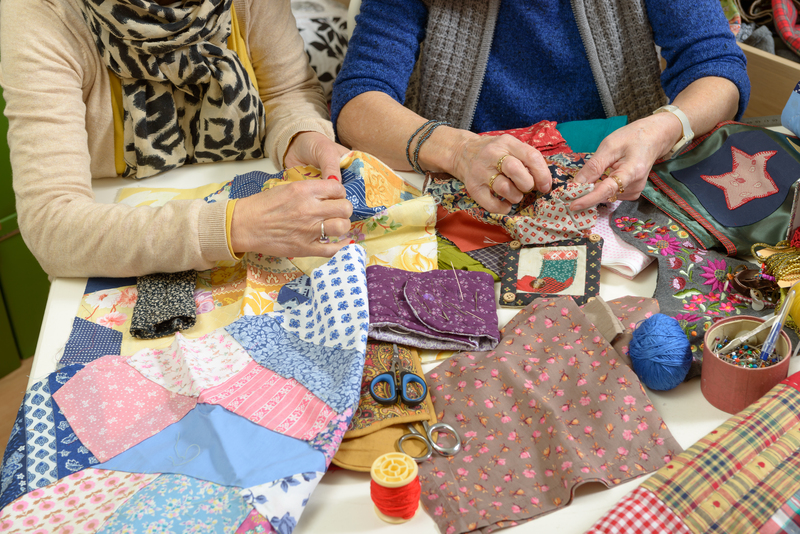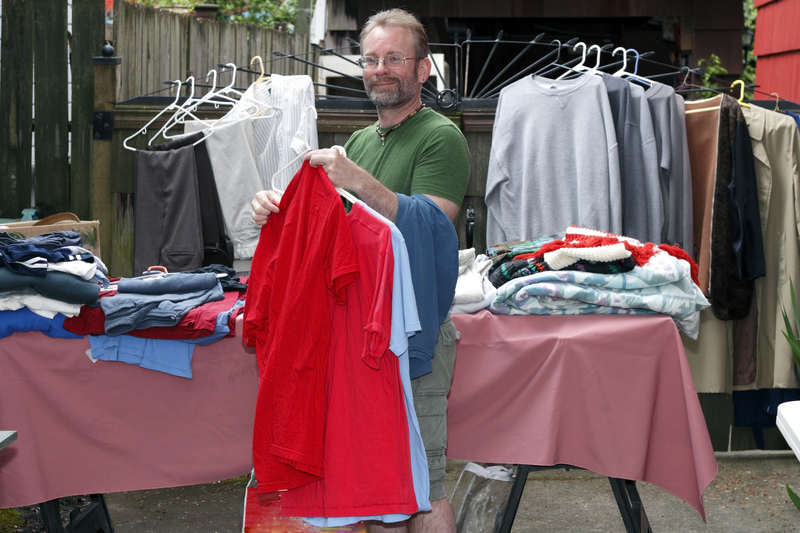How Artists Are Reimagining Waste as Eye-Catching Masterpieces
Waste has long been associated with decay, pollution, and environmental crisis. However, a growing movement is transforming the narrative, as visionary artists across the globe see waste not as the end of an object's life, but the beginning of a new artistic journey. In this article, we delve into how artists are reimagining waste as eye-catching masterpieces, exploring the motivations, techniques, and impacts that are redefining the intersection of art, sustainability, and innovation.
The Rise of Eco-Conscious Art
In the age of environmental awareness, creative reuse has become a powerful trend. Faced with increasing waste and depleted resources, artists are challenging viewers to rethink their relationship with everyday materials. By elevating discarded items into works of art, they are making bold statements about consumerism, beauty, and our role as stewards of the planet.
The Roots of Upcycled Art
Upcycling--the process of transforming waste into products of higher value--has roots in folk and outsider art traditions. What was once necessity, such as making quilts from old clothes or assembling sculptures from scrap metal, has evolved into a celebrated practice in the contemporary art world.
Artists now intentionally select waste materials for their aesthetic and symbolic possibilities. They turn plastic bottles, worn tires, obsolete electronics, and everyday trash into expressive statements and visually compelling installations.

Why Artists Choose Waste as Their Medium
The motivations behind using waste are varied and often deeply personal. Here are some driving factors:
- Environmental advocacy: Many artists use waste to highlight issues such as pollution, ocean plastic, and landfill overflow, urging viewers to reconsider their consumption habits.
- Resourcefulness: Creating with found objects showcases human ingenuity and the potential for transformation in what society deems worthless.
- Visual impact: The juxtaposition of beautiful forms made from trash challenges ideas of value, beauty, and permanence.
- Narrative power: Each piece of waste bears its own history, arming the final artwork with stories and layers of meaning.
The Allure of the Unconventional
Artists who transform garbage into art enjoy the unpredictability of their materials. There is often an element of surprise as textures, colors, and shapes are dictated by the ever-changing supply of discarded objects. This serendipity can push creativity in unexpected and exciting directions.
Striking Examples: Artists Who Turn Waste into Wonders
Let's explore some inspirational examples of artists who have built their careers on turning trash into treasures:
Vik Muniz: Portraits from Debris
Brazilian artist Vik Muniz is renowned for his large-scale portraits made entirely from recycled materials. In projects like "Pictures of Garbage," Muniz collaborated with landfill workers in Rio de Janeiro to recreate iconic images from detritus. His photographic documentation of the process raises awareness about poverty and environmental degradation while illustrating the transformative potential of art.
Bordalo II: Life-Sized Animal Sculptures from Trash
Portuguese street artist Bordalo II brings attention to species endangerment with his colorful animal sculptures assembled from urban waste. Broken car parts, plastic containers, and scrap wood are repurposed into vibrant 3D murals, reminding us how pollution threatens wildlife. His work can be found on walls and in galleries throughout Europe and beyond.
El Anatsui: Rewoven Bottlecaps
The Ghanaian artist El Anatsui creates shimmering textile-like tapestries from thousands of discarded aluminum bottle caps and metal seals. His monumental installations challenge perceptions of materiality and craft, while referencing both local recycling traditions and the global flow of goods and waste.
Jane Perkins: Mosaics with a Twist
Jane Perkins from England transforms broken toys, buttons, and jewelry into textured portraits and reinterpretations of famous paintings. Her intricate mosaics highlight the possibilities of upcycled art and inspire audiences to view household junk in a new light.
Techniques for Transforming Waste into Masterpieces
How do artists work with waste to create pieces that are both meaningful and visually striking? Here are some common techniques:
- Assemblage: Combining disparate found objects into cohesive sculptures or installations.
- Collage: Layering and arranging refuse on flat surfaces, often with adhesives or resin, to build up complex images.
- Mosaicing: Using small bits of colored glass, plastic, ceramics, or electronic waste to compose larger pictures.
- Weaving and stitching: Connecting soft materials or flexible plastics to create textiles or soft sculptures.
- Melting, shredding, and reforming: In some cases, plastics can be melted down or reshaped, while metals may be welded or hammered.
Materials Commonly Reimagined in Art
Artists are limited only by their imagination. Some frequently used waste materials include:
- Plastic bottles, bags, and containers
- Metal scrap, wire, and cans
- Cardboard and paper products
- Used clothing and textiles
- Glass bottles and shards
- Electronic waste: circuit boards, CD-ROMs, cables, cell phones
The Impact: More Than Just Beautiful Objects
Reimagining waste as art has effects that go beyond aesthetics. These artworks are catalysts for discussion, provoking thoughts about consumption, wastefulness, and the environment. Let's look at the broader influence:
Changing Perceptions
Through the lens of art, waste becomes something not to be hidden away, but celebrated for its potential. This shift in perspective helps to break down the stigma around used materials and fosters a culture of resourcefulness.
Education and Community Involvement
Many artists run workshops or participatory projects, inviting communities--especially young people--to engage with waste creatively. These activities spark conversations, build eco-literacy, and provide hands-on lessons in reuse.
Sparking Policy and Industry Change
As awareness grows, so does pressure on governments and industries to reconsider waste management, packaging, and recycling practices. Some artists collaborate with environmental NGOs or city agencies, installing their works in public spaces to reach broader audiences.
How to Support Art Made from Recycled Materials
Interested in contributing to this movement? Here are ways you can champion artists who create art from waste:
- Visit exhibitions: Attend gallery shows, public art installations, and festivals featuring upcycled art.
- Buy artwork: Collect works made from found objects or support artists through commissions and online platforms.
- Host workshops: Organize upcycled art events at local schools, libraries, or community centers.
- Promote on social media: Share your favorite eco-artists and projects to inspire others.
- Practice creative reuse: Try making your own art from household waste and encourage family and friends to join in.
Major Exhibitions and Initiatives Worldwide
Interest in waste-to-art movements is skyrocketing, with major museums and art fairs dedicating space to these innovative works. Some notable examples include:
- The Trashion Fashion Show (global): Showcases wearable art made from recycled materials.
- The Washed Ashore Project (USA): Installs massive marine life sculptures from beach-cleanup debris to educate about ocean plastic.
- Art From Waste Exhibitions (India): Annual events across cities like Mumbai and Pune, featuring student and professional artists turning trash into treasure.
- Eco Art Project (Europe): A network supporting artists working at the intersection of environment and creative expression.

Challenges Faced by Waste-to-Art Artists
While the movement's momentum is undeniable, transforming waste into art is not without its obstacles:
- Sourcing materials: Finding safe, clean, and visually interesting waste can be time-intensive.
- Health risks: Some waste items harbor toxic substances, requiring careful handling and protective gear.
- Prejudice: Not all audiences or collectors appreciate the value of reused materials, though this is rapidly changing.
- Longevity: Artworks made from non-traditional materials may require special care to prevent deterioration.
Innovative Solutions
To overcome these challenges, many artists collaborate with recyclers, industry partners, or environmental organizations for material sourcing and safety protocols. Some experiment with coatings, backing boards, or display techniques to preserve their fragile creations.
The Future of Waste as Artistic Inspiration
As society increasingly values sustainability, the movement to reimagine waste as art is set to grow. New technologies, including digital fabrication and bio-based plastics, are providing even more ways for artists to innovate with recycled and repurposed materials.
Art as a Vehicle for Change
Perhaps the greatest power of this movement is its ability to touch people's hearts and minds. By transforming what we throw away into stunning masterworks, artists are proving that beauty, value, and meaning can be found where we least expect it. Their creations invite audiences to see the world differently--and, ultimately, to act differently as well.
Next time you encounter a piece of trash, remember: In the right hands, it could become a masterpiece.
In conclusion, from large-scale public installations to small community workshops, the trend of turning waste into eye-catching art is shaping contemporary culture. By supporting these artists and projects, each of us can help spread the message that sustainability isn't just a necessity--it can also be a profound source of creativity and beauty.